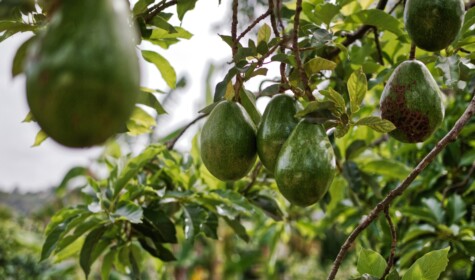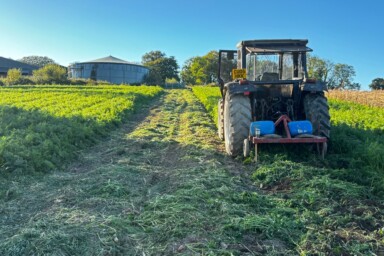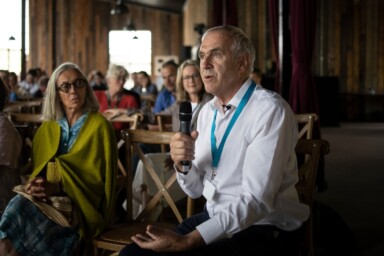For time-pressed shoppers wanting to choose healthy, sustainably produced food, the organic label has become a reliable go-to. Yet, although it is enshrined in law and widely established, there are challenges to organic certification, including the barriers to farmers in attaining certification and the dilution of standards through trade agreements.
In this extract from her new book, The Avocado Debate, Honor May Eldridge explores labelling through the lens of what has arguably become one of our most prized fruits. While the avocado’s popularity has exploded over the last 30 years, its ubiquity has threatened its sustainability and opened the door to some deeply problematic issues.
Assurance: certifying avocados
More and more consumers are searching out products that reflect their values, including trying to source more sustainable avocados. The British public increasingly demonstrate the desire for transparent information to better understand the origin of their products. However, this can be easier said than done. The shelves crawl with sustainability logos: more than 460 of them on food and beverage packages, and a third of them created over the last 15 years. An avocado alone can have multiple stickers and badges to demonstrate its environmental credentials. Current labelling regulations are not up to the task to provide the transparency that consumers desire. With so many different assurance schemes currently being used on packages, consumers are often confused as to how to assess one against another. Since its founding, the Sustainable Food Trust has been working to increase transparency in the food chain. According to Adele Jones, their Executive Director, “for the majority of citizens, these labels are opaque, offering little immediate explanation as to what they represent”. Sarah Compson, Associate Director of the Soil Association and International Federation of Organic Agriculture Movements (IFOAM) Organics International World Board member agrees saying, “it’s important to look behind the label and understand the standards underpinning a certification in order to get a sense of the real difference it makes”.
Organic
If a shopper wants to reduce their environmental footprint, one of the best ways is to buy organic. For products to be certified as organic, they must meet a series of standards that are set and audited by certification bodies (CBs). Farmers need to have annual inspections to demonstrate delivery against those standards, ranging from controlled pesticide usage to crop rotations and natural fertiliser usage. These practices have been proven to limit environmental damage and improve ecosystem health. As a shortcut for time-pressed shoppers, looking for a more sustainable option, spotting the organic stamp can be a winner. Unlike other certifications for food, the organic standard is enshrined in law. This means that violations can be enforced and held to account, improving authenticity and trust. As Compson says, “Unlike some eco-claims, in most regions the term organic is protected by law. Organic certification bodies are themselves regulated by accreditation bodies and more often than not, national governments.”
While the traditional use of farming methods that promote soil health (and do not use agrochemicals) have been practised for millennia, the ‘organic movement’ started in the 1940s when the Green Revolution started to take full force. This happened almost simultaneously across the world with a strong presence in Asia (notably Japan and Korea) and in India. The primary ethos that underpins organic is the idea of building soil health through regenerative means. The movement grew progressively across the post-war period with American ecologists Rachel Carson and Jerome Rodale leading the fight against the expansion of industrialised agriculture. In 1972, the IFOAM was founded to help grow collaboration globally.
More recently, organic has come to be defined by certification. Most readers would recognise the organic label on their supermarket avocado, but how many would be able to clearly explain what that meant? Organic grew dramatically in the 1990s when certification moved mainstream. This growth was due to rising affluence (consumers were willing to pay more for products) and growing environmental awareness, meaning more farmers could see the benefits of switching to organic production. It moved from a niche sector into mainstream production. Some farmers choose to be certified organic because of the environment. Others do it so they can charge a higher price and make more profit. For most, it is a combination of the two. According to Compson, “Organic certification provides a market mechanism for farmers to be rewarded and recognised for their positive efforts towards tackling the climate and ecological crisis.” Today, shoppers in the United Kingdom spend £60 million a week on organic.
Yet, there are concerns about organic certification. Firstly, each country sets their own organic standard. This can differ from nation to nation. For example, the United States will certify hydroponics as organic while the EU does not. These differences make it more complicated to classify imported goods as organic. Each importing nation must recognise and accept the organic certification of the exporting nation through a process called ‘equivalency’. Agreeing on what is equivalent tends to happen during trade negotiations, which often raises controversies. Government trade negotiators are not always experts on sustainable agriculture and might not always comprehend the real-world impacts of nuanced differences in organic standards. Secondly, the negotiations on organic (or phytosanitary standards overall) tend to happen as part of the wider trade deal discussions, and therefore, compromises on food standards can be part of an overarching trade negotiation.
One might think back to the way in which NAFTA [North American Free Trade Agreement] was negotiated to see how power dynamics and compromise play central roles in any trade negotiation. For example, in a negotiation for an FTA [free trade agreement] between the United Kingdom and the United States, the UK trade negotiators might accept hydroponics as organic to win a concession on automotive standards. Compson acknowledges this saying, “Equivalency can be a challenge, particularly for principles-led movements like organic, because uncomfortable compromises can potentially be made for the sake of political expediency. But they’re also an amazing tool to help foster trade between farmers and markets around the world,” and she highlights the IFOAM Organic International Norms as a global benchmark. However, potential differences in imported organic vs. domestic organic are not clear to the consumer. The majority accept the organic label as proof of a production standard and do not interrogate beyond that. For the most part, that is a reasonable assumption. Any certified organic product will have a smaller environmental footprint than a non-certified product.
However, organic certification is not cheap. Farmers must undergo an expensive (and sometimes bureaucratic) certification process. Most certifications require producers to manage their land in line with organic principles for multiple years (two in the United Kingdom, three in the United States) before produce can be labelled as ‘organic’. This means that farmers have to employ farming techniques that can be more expensive and produce lower yields without benefiting from the price premium that the organic certification can bring. After that, they still need to pay annually to keep up their certified status and undergo an invasive on-farm audit. According to Patrick Holden who founded the Sustainable Food Trust and was previously the Director of the Soil Association,
“The organic audit, now enshrined within the EU regulatory framework focuses, wrongly in my opinion on compliance, meaning whether the licensee cheated or not, as opposed to the impacts and outcomes of the system. This seems perverse to me. After all, conventional farmers are doing all the damage, so they should be audited to make sure that they are legally compliant, whereas organic producers should be measured to see how well we are doing.”
For many small-scale farmers, particularly in the Global South, this process is out of reach. They might farm in an agroecological manner…that would mean that they meet the organic standards, but they cannot afford to undergo the process to have that legally recognised. As Jones says,
“One issue is the cost of certification to farmers, both in monetary and time terms – audits are often long, stressful and at the end, even if they have passed, don’t necessarily give the farmer any constructive feedback on how they can be incrementally better each year.”
The World Avocado Organization maintains that this is the case. They say that the majority of small-scale avocado farmers are farming in a way that is essentially organic but choose not to go through the certification process because of the cost and the bureaucracy. Compson has a solution to this challenge,
“If we want to see more farmers certified organic in order to provide for markets, either local or international, it’s important that the process is de-risked as much as possible. For too long, farmers have borne both the responsibility for farming in a way that’s better for the environment and also the financial risks associated with doing so. An enabling policy environment, fair trading terms and good returns are all important ways to encourage farmers to get certified.”
This extract from The Avocado Debate (Routledge, 2023) by Honor May Eldridge has been reproduced with permission from the publisher. Find out more about the book via the publisher’s website.
Want to learn more about the history of the organic movement? We recommend this episode of Radio 4’s Great Lives which features the SFT’s CEO Patrick Holden talking about organic farming pioneer, Lady Eve Balfour. Listen here.







